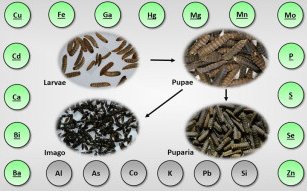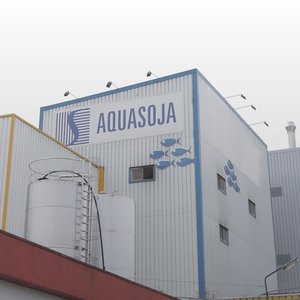In recent years, an increased interest in large-scale insect breeding has been observed with particular attention to the potential of its use in aquafeeds. Previous publications have proven that some heavy metals can be bioaccumulated in fly Hermetia illucens (black soldier fly), even when the insect is raised on optimal feed with acceptable heavy metal content.
A team of Polish researchers performed a study to determine the ability of H. illucens to bioaccumulate different elements, such as macro- and micronutrients, and for the first time, selected non-essential elements from optimal feed, consisting of a commercial fish feed.
“This research shows for the first time the ability of H. illucens to bioaccumulate chosen non-essential elements such as barium, bismuth and gallium. Our results showed that bioaccumulation of barium, bismuth, cupper, iron, mercury, magnesium, molybdenum, selenium and zinc occurred in all stages of insect development and in puparia, while bioaccumulation of aluminum, arsenic, cobalt, potassium, lead and silicon was not found,” researchers said.
The highest bioaccumulation factors were obtained for calcium and manganese in puparia. In addition, calcium, cadmium, gallium, manganese, phosphorus and sulfur were bioaccumulated only in some developmental stages of the insect.
High concentrations of toxic metals in H. illucens, especially in larvae and pupae, represent an obvious threat for feed produced from this insect. In this research, the maximum limit was exceeded only for mercury but in all insect materials, according to Directive 2002/32/EC of the European Parliament and of the Council on undesirable substances in animal feed. “Due to the potential of H. illucens to bioaccumulate toxic heavy metals, their content in larvae feed should be carefully monitored, especially since in industrial breeding, larvae are fed with biowaste products from various industries,” researchers said.
Download the study here.













